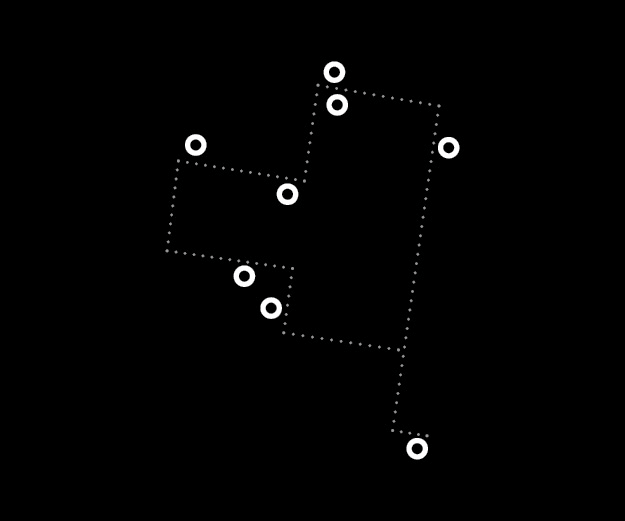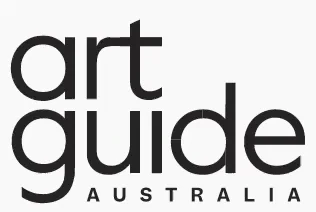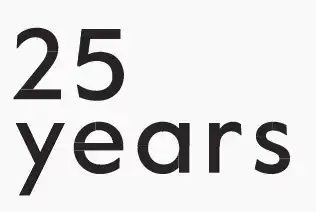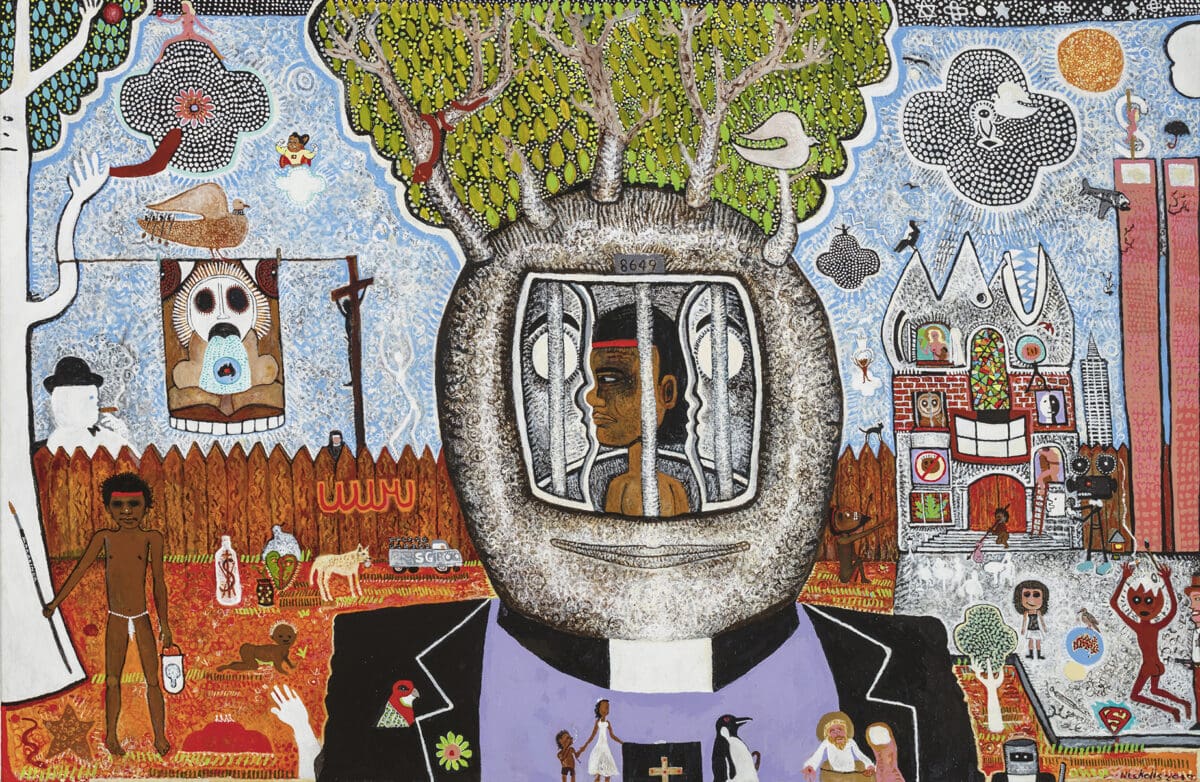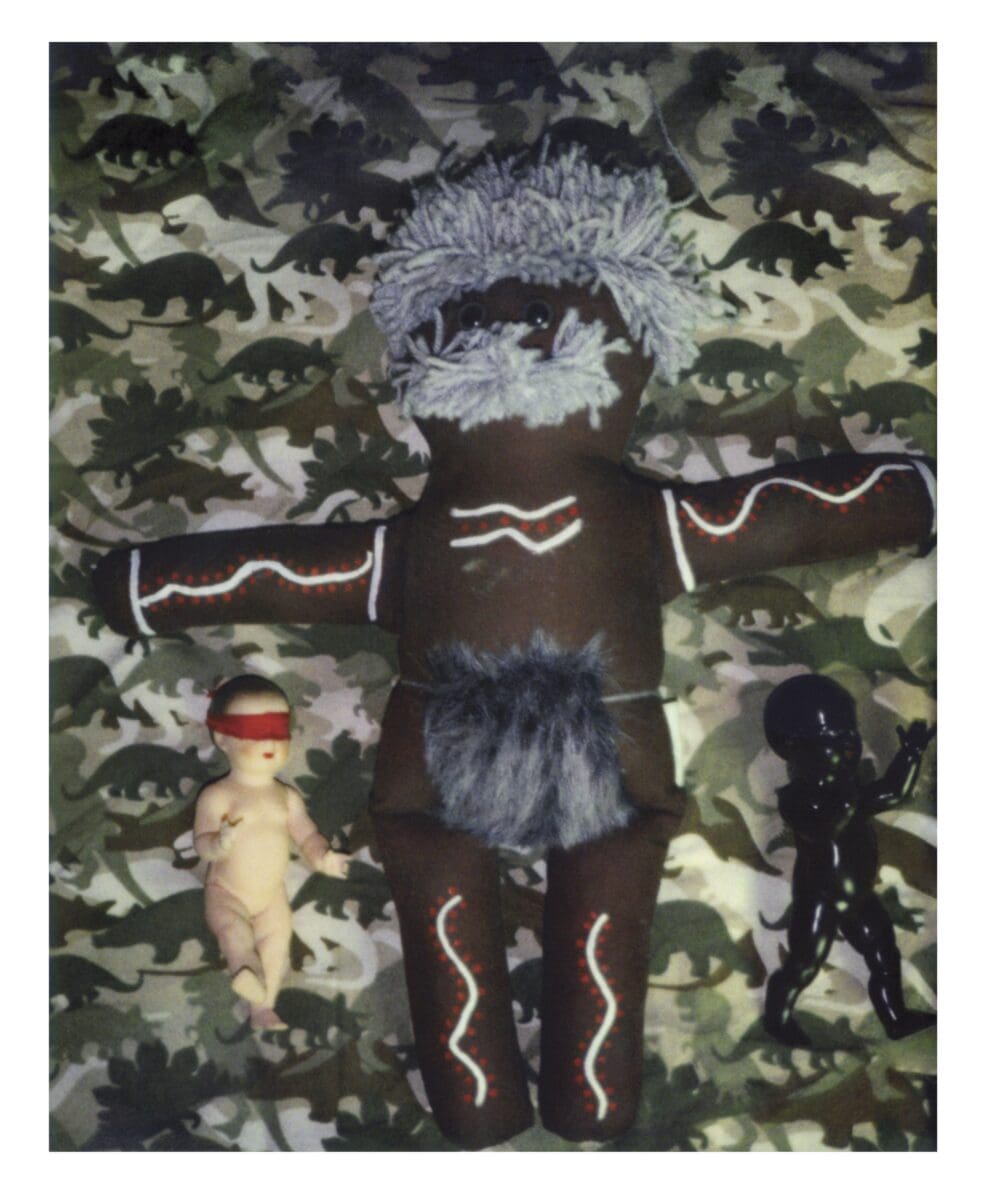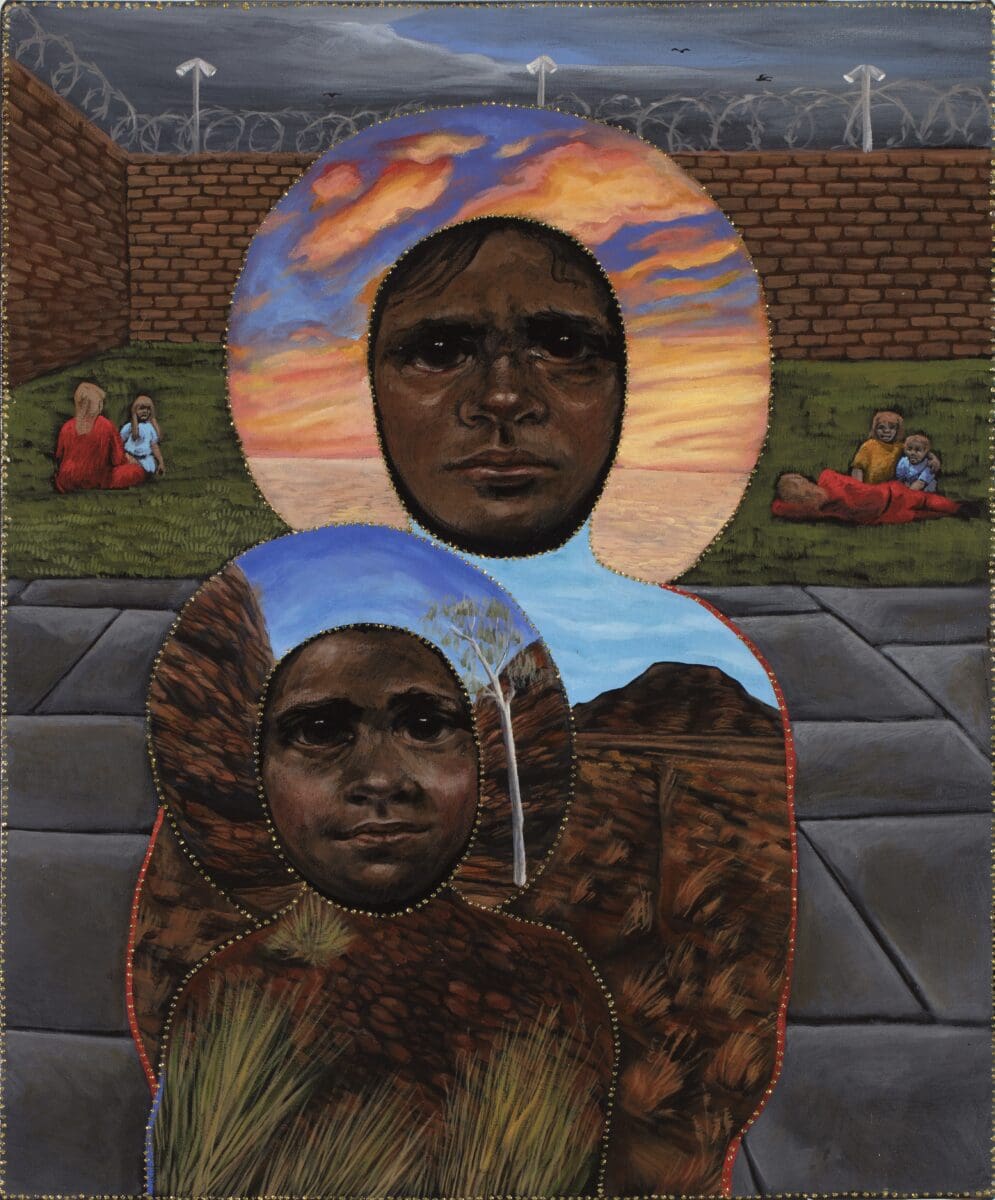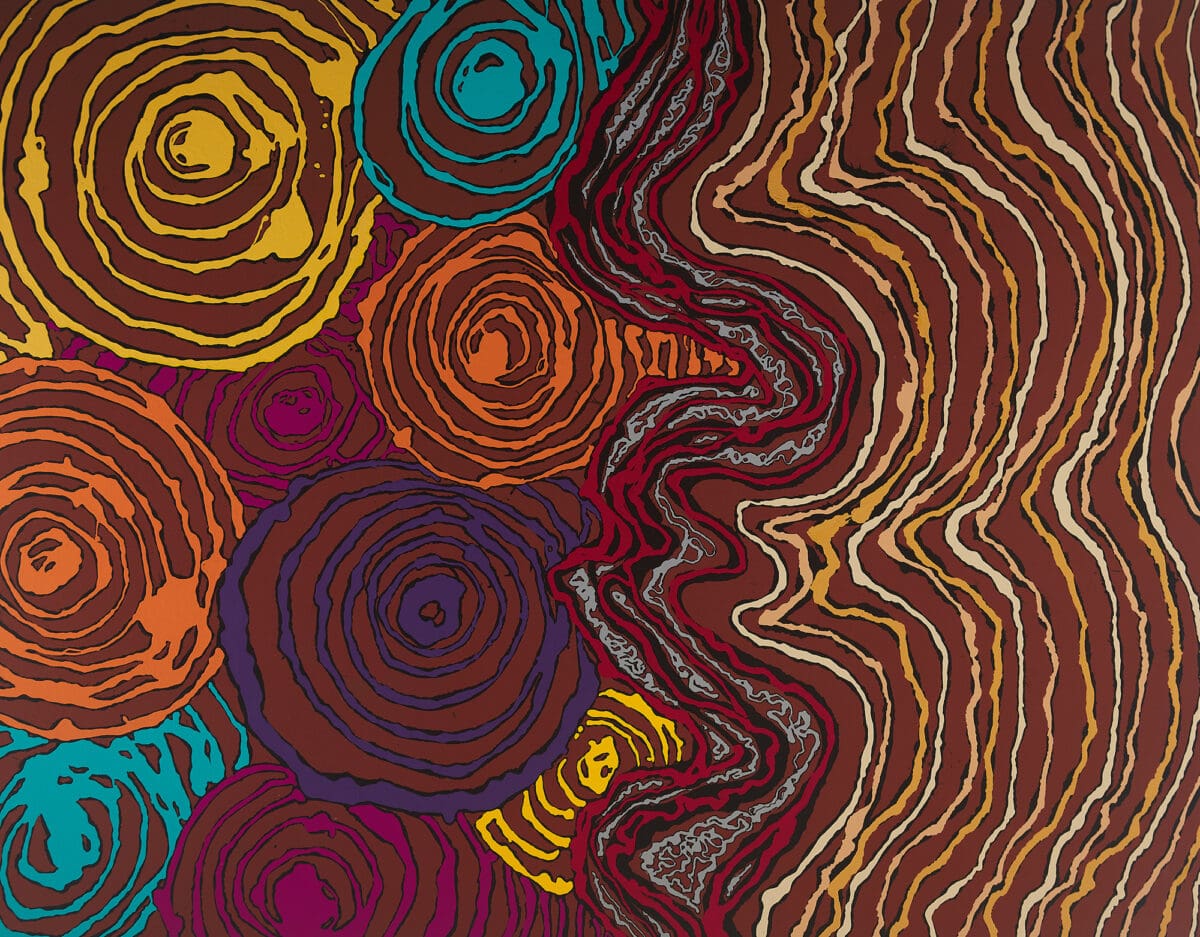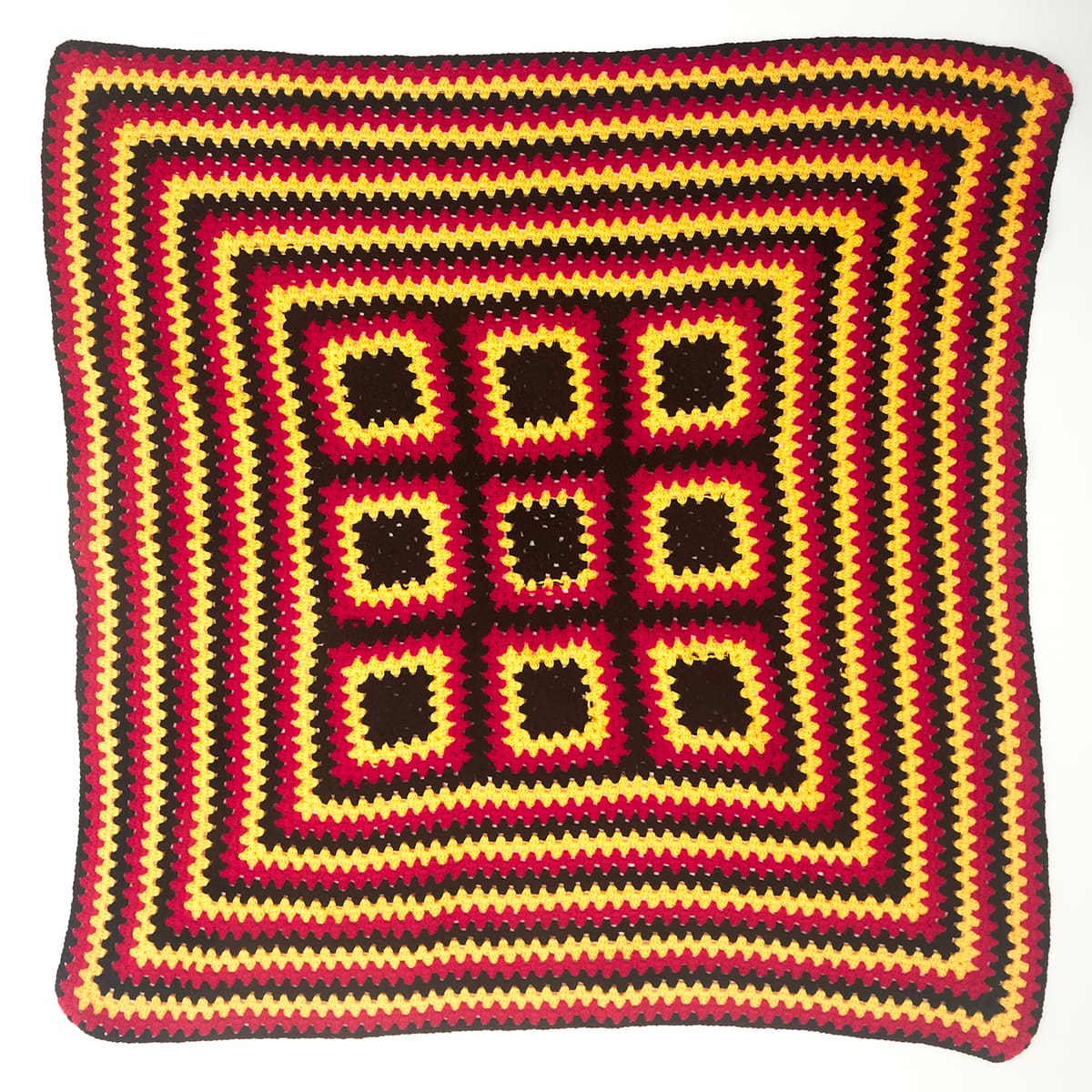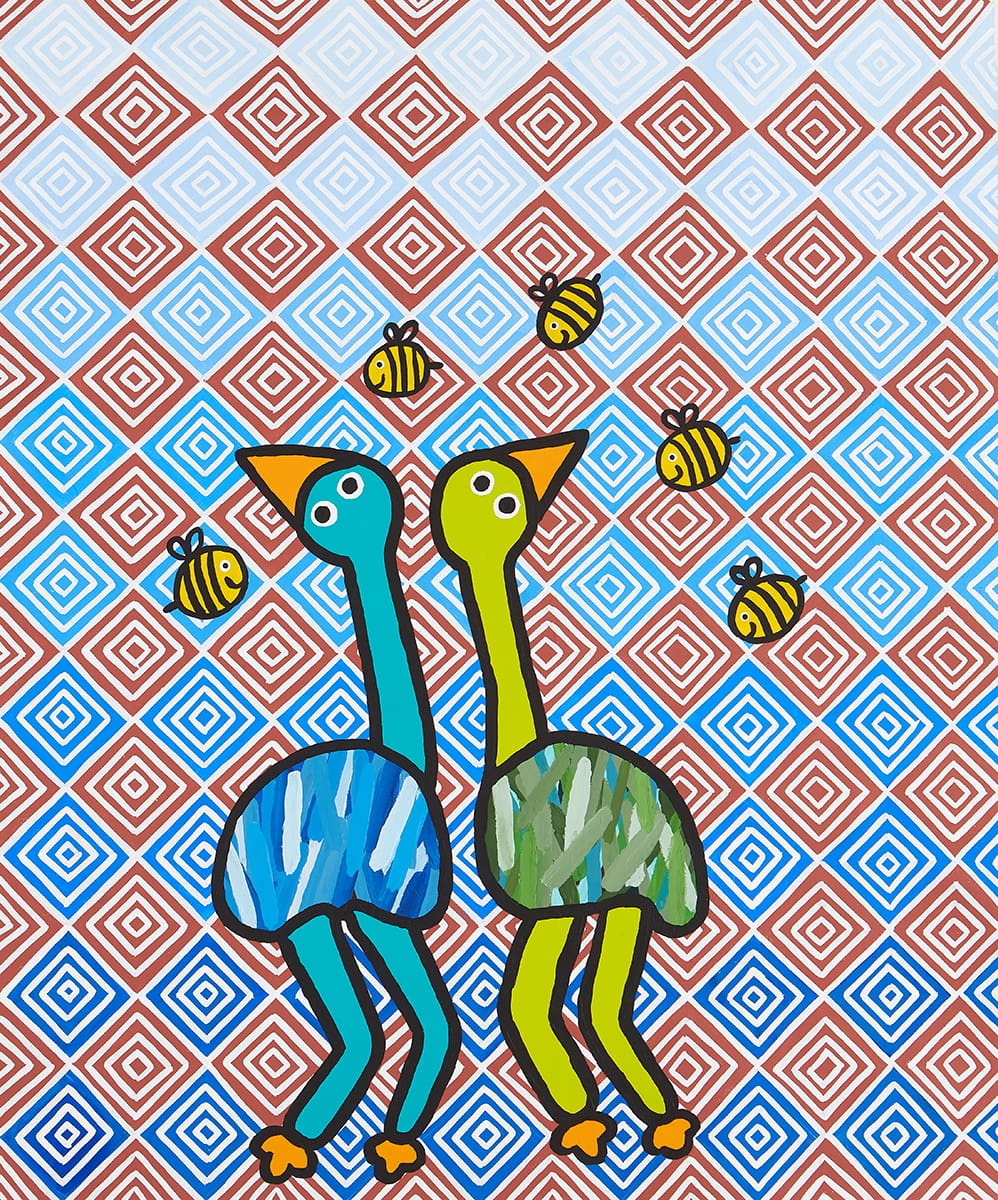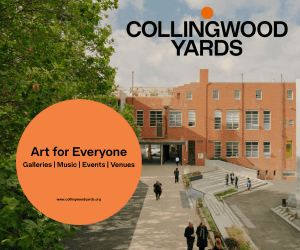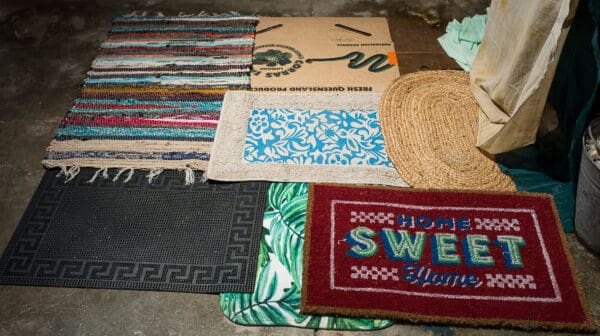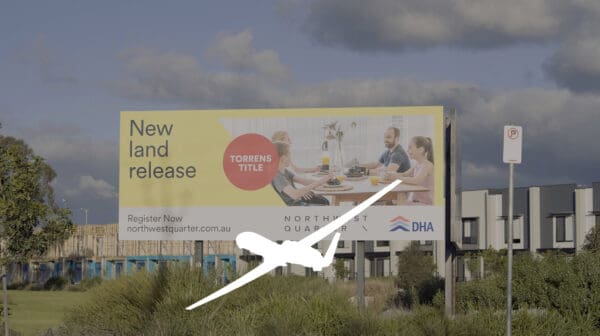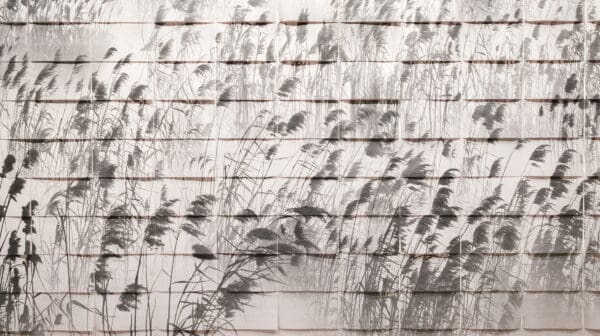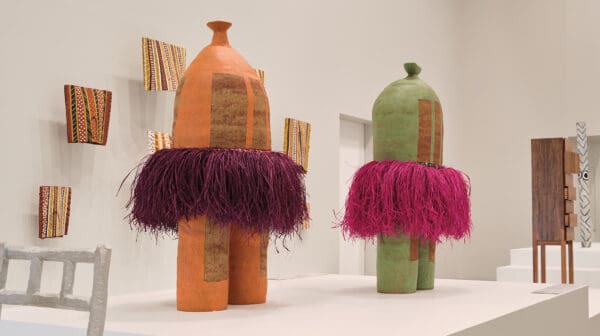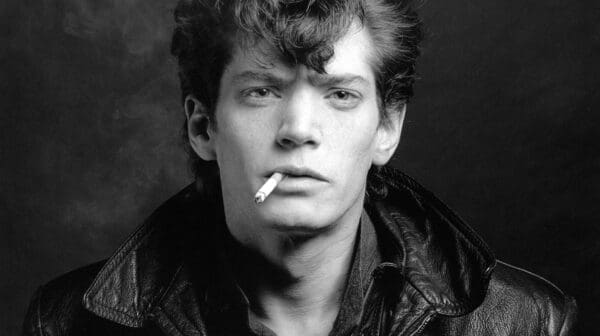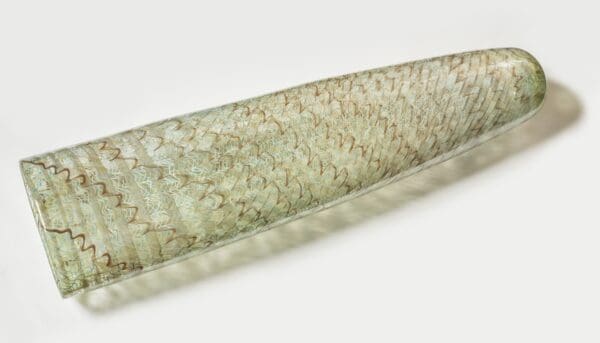The tireless advocacy of Aboriginal and Torres Strait Islander communities across the country against systems of incarceration that disproportionately target and criminalise our people is an ongoing fight. Blak In-Justice: Incarceration and Resilience, a major exhibition at the Heide Museum of Modern Art developed in partnership with The Torch, highlights the stories of our people who are affected by the so-called justice system.
The groundbreaking show focuses on a selection of artworks from trailblazing artists such as Vernon Ah Kee, Gordon Bennett, Destiny Deacon, Julie Dowling, Jimmy Pike, Judy Watson and Richard Bell. Combined with artists from The Torch including Thelma Beeton, Stacey Edwards, Felicity Chafer-Smith, Robby Wirramanda and Sean Miller, this show highlights the collective strength of the artists in speaking back to the systems which actively impact the lives of our people and communities.
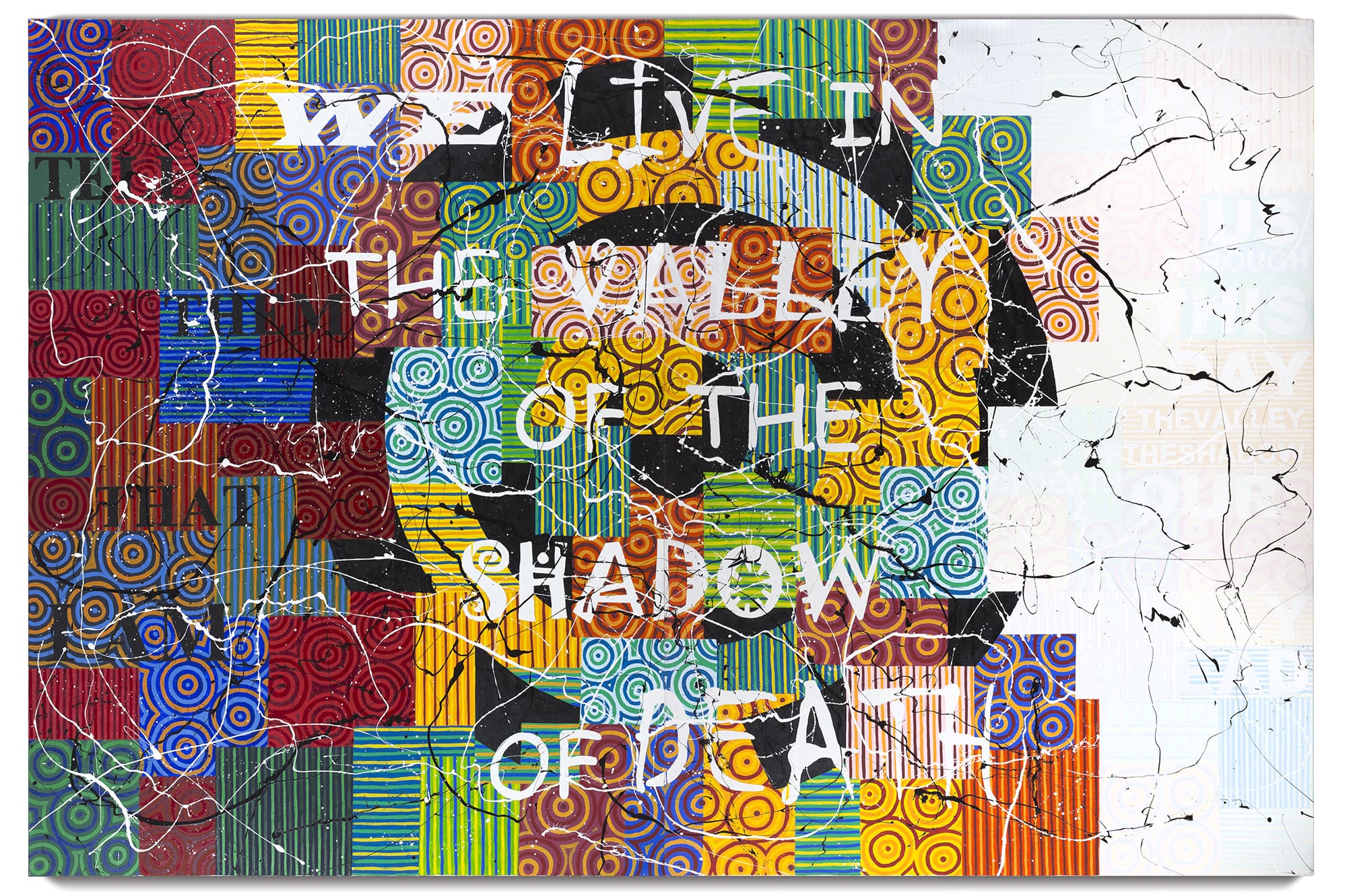
Barkindji artist, curator and creative director of The Torch, Kent Morris, states, “Uncle Pat Dodson said it: ‘the legal system in this country sucks our people up like a vacuum cleaner.’ It’s frustrating.” He continues, “This exhibition was really inspired by, not only the ongoing ingrained systemic discrimination in the legal system for our people, but what we can actually do about it—what we are doing about it.” Kent adds, “Our community has so many fantastic ideas and initiatives.”
The partnership with Heide has been significant in the way that the gallery has not shied away from the topic, embracing it, instead, with full support. Kent shares, “One of the reasons I wanted to do this was to bring all these voices together—including those who’ve experienced incarceration and lived through it, and how they’ve found their way forward through connection to Country, culture and art.” He adds that “we’re [making] that powerful statement collectively; it’s not just a voice here and a voice over there, it’s voices from all around the country and it’s voices from over a long period of time.”
The exhibition is thoughtfully considered by way of design and layout—moving audiences through the show using colour, material and direction. Kent states, “It’s all grounded in Country—the walls are painted in earth ochres, in the first gallery with strong political statements there’s a blue-grey that could reference prison, the old bluestone jail walls, it could also reference that beautiful crushed charcoal and white ochre that’s mixed for artworks produced in different parts of the Country.” The narratives flow on, using red, clay and yellow ochres on the walls—a reminder that Country and ancestral ties are important for strength and spirit during and after incarceration. Kent adds, “That’s definitely from the heart.”
The work at The Torch includes art, cultural, and arts industry support to First Nations people who are currently incarcerated or have recently been released from prisons in Victoria.
The programs, which run both in prison and outside, have significantly created a positive impact and change in the lives of Aboriginal peoples affected by this system. Ngarrindjeri artist Felicity Chafer-Smith is exhibiting in the show. “Being a participant of The Torch program has helped me create an identity I am proud of,” she says. “Blak In-Justice is giving us a platform to share our truth, our experiences and what it’s really like for us and our mob. Most people only know what the media chooses to portray, but this exhibition will allow me and my people to not be censored and be heard.” Felicity began working as the accounts and operations assistant with The Torch, then moved on to a new role as an Indigenous arts officer delivering The Torch program to First Nations women.
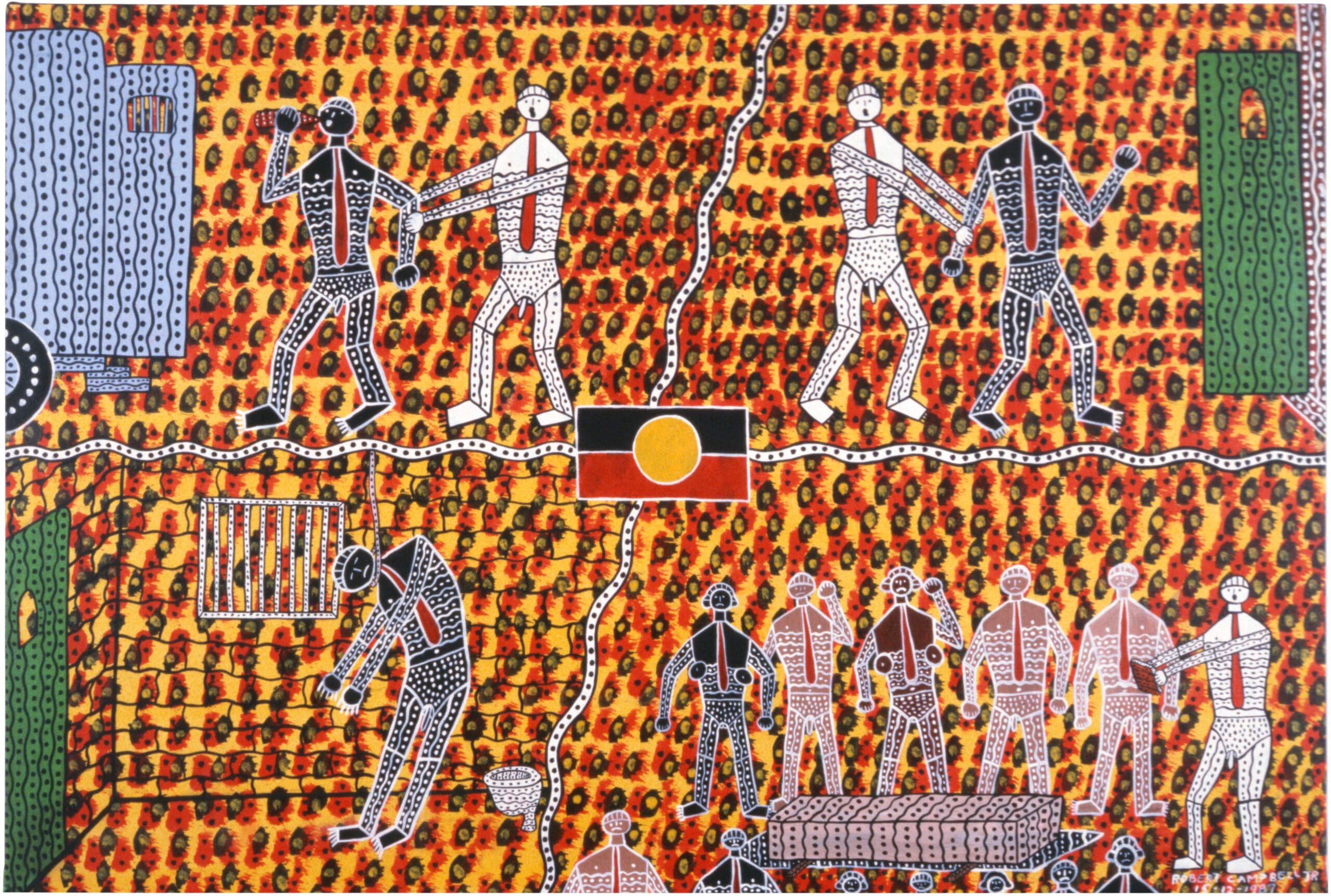
Felicity states, “I’m hoping to share awareness of my journey within the criminal justice system and share how my connection to culture helped me remain resilient and focused during my incarceration. My painting showcases two of my totems, and the story contains a moral lesson as many of our stories do.”
Wergaia/Wotjobaluk artist Robby Wirramanda reflects: “Through my work, I reconnect with the stories that cradle us beyond struggle: the whispers of the Land, the tangible and intangible truths that bind us to Country. After years of creating art that mirrored protest and politics fuelled by injustice, I now seek refuge in the deeper rhythms—the ones that existed before chains, before removal, before the word ‘incarceration’ scarred our collective memory.”
Robby adds, “My pieces are an invitation to remember what prisons and society tried to erase: the sacredness of soil underfoot, the kinship of stars above, and the resilience woven into our very bones. This isn’t about turning away from pain, but about grounding our healing in the beauty that outlives it.”
The Torch is holding its annual Confined 16 exhibition, a showcase of the talents of program artists, at the same time as Blak In-Justice. For Kent and the artists, this exhibition is about centring community, Country and truth, and ultimately the importance of storytelling, especially when it comes to healing from the trauma of prison systems.
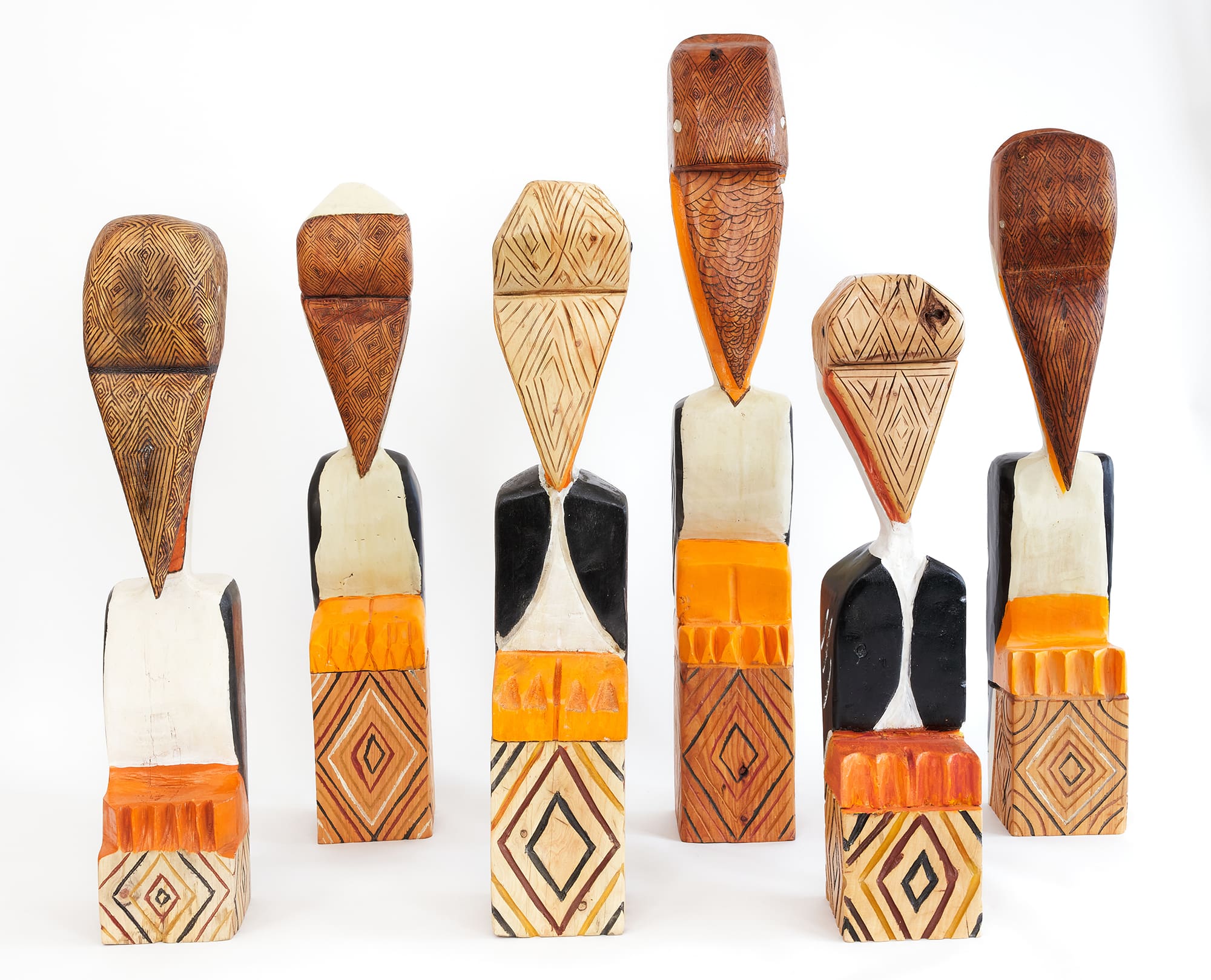
Robby shares this sentiment strongly, saying: “Exhibitions like this disrupt silence and invisibility. They force audiences to confront the realities of systemic harm while centring Indigenous resilience and creativity. When people engage with our art, they’re not just seeing statistics—they’re meeting individuals. It sparks conversations that go beyond pity or blame, toward accountability, empathy, and the urgent need for change. Our stories, once buried, become seeds of awareness and action.”
To echo the words of Kent, and the hard work of First Nations people across the justice sector, who work tirelessly to break cycles of punitive punishment: “everyone needs to be part of the solution. It can’t just be left to us on our shoulders all the time. I want this exhibition to bring people along, to understand that we all need to be part of the solution.” Art making and healing go hand-in-hand with advocacy, and ultimately create a space where sharing the hard truths of our society can spark empowerment in our collective resistance and foster change.
Blak In-Justice: Incarceration and Resilience
Heide Museum of Modern Art
(Melbourne/Naarm VIC)
On now—20 July
This article was originally published in the May/June 2025 print edition of Art Guide Australia.

